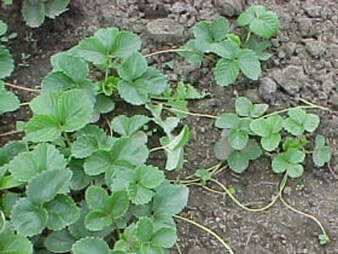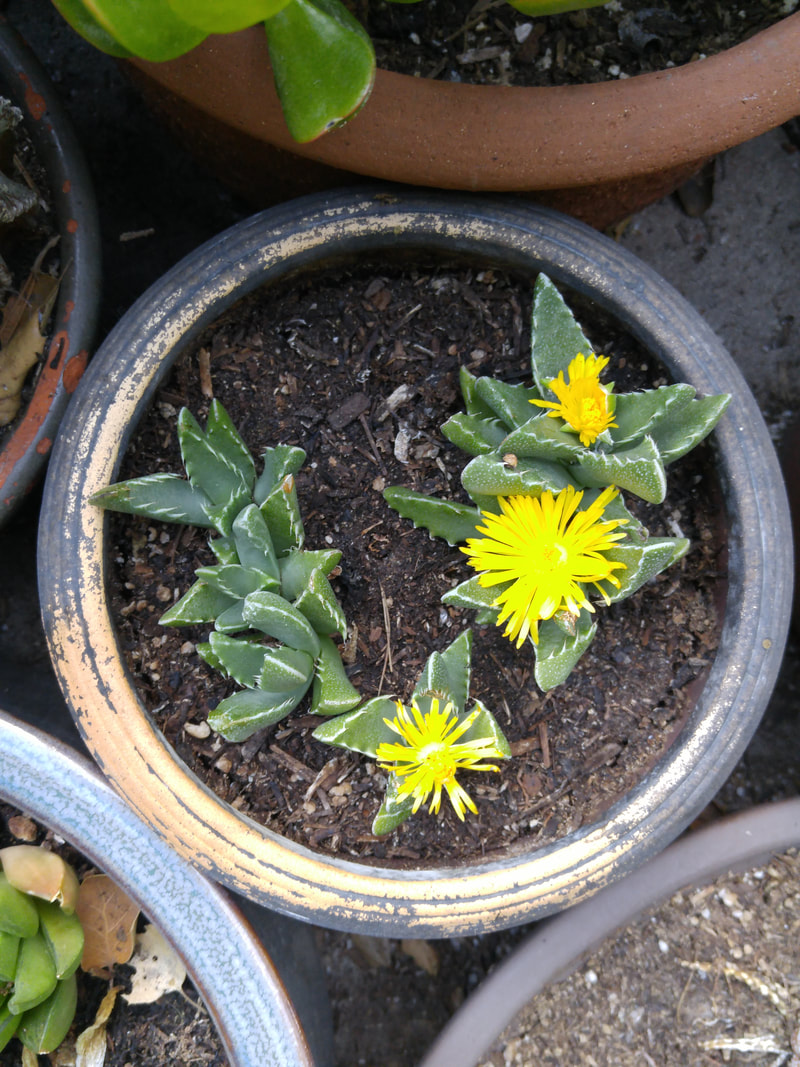| Salvias continuing their year-round bloom | I do love gardening at this time of year, when air temperatures are in the 70s and soil temperatures are still warmish. Seeds germinate easily, and transplants galore are available at nurseries. But the munchers are also active – my entire batch of seedlings were beautifully sprouting one day, without their baby leaves the next day, and even stems shorn to the soil level the next. And this was when my seed trays were six feet in the air on top of a rack! Another reason to be relieved and thankful that we gardeners aren’t limited to what we can grow at home, that we have our local nurseries and online resources! Pumpkins Alive! Given the end-of-the-month festivities, toast -- don't toss -- your pumpkin seeds when you carve your Jack O'Lantern. Separate the seeds from the stringy pulp by washing the seeds well. Spread them on a cookie sheet and sprinkle lightly with salt if desired. Toast them for three or four minutes at 375 degrees Fahrenheit, stir, and toast another two or three minutes until they're evenly golden. Cool them to room temperature, and enjoy! Plants Overwintering Edibles The entire slew of cool-season veggies that love the cool weather and will provide a wide range of flavors and textures and colors for your culinary delight – including artichokes, asparagus, fava beans, beets, broccoli, Brussels sprouts, cabbage, carrots, cauliflower, celery, chard, chives, garlic, kale, kohlrabi, leeks, lettuce, onions, parsley, peas, radishes, rhubarb, sage, spinaches, shallots, and thyme. Just about any broccoli variety will do well in our area. After harvesting the single head, many little bitesize florets will appear at seemingly every node (where the leaf emerges from the stem). For a milder taste, try a cross between broccoli and cauliflower – sometimes called “broccoflower”, that forms a brilliant chartreuse, beautifully pointed head; Romanesco is one variety. Plant asparagus crowns at least six inches deep, and mulch them heavily with manure. Winter rains and later irrigation will slowly wash the nutrients down to the root zone. Cole crops like broccoli, Brussels sprouts, cabbage, cauliflower and kohlrabi frequently develop long stems before their first leaves, so transplant them up to the first set of leaves to prevent their developing into weak, leggy plants that flop over. Plant garlic cloves now so they’ll develop strong root systems over the winter, and leaf production can begin early in the spring, resulting in a larger head next summer. Also plant strawberry plants now so they’ll develop their strong root systems over the winter. In early spring, they’ll shift their energy to their leaves and blossoms. Flower Bulbs For a cover crop of flowers before, during, and after spring bulb bloom, sow seeds or plant seedlings of low-growing annual bloomers after you've planted the bulbs. Think of color contrasts such as purple pansies with yellow daffodils or white alyssum with red tulips. Good choices include calendulas, pansies, Iceland poppies, primroses, dwarf snapdragons, dwarf stock, and violas. Separate and replant crowded clumps of flower bulbs, especially if they’re already sprouting. For those that bloom in early spring, place them near deciduous trees so they’ll show their color before the trees leaf out. Change Watering Frequency Help overwintering plants harden off by changing your irrigation schedule. Cooler weather slows evaporation from the soil and transpiration from plant foliage, so irrigation is needed less often. So, decrease the number of times -- but not the length of time -- you water. This change will still provide water to deep roots while allowing for longer periods for the soil to dry in between waterings, and it doesn't encourage new, frost-tender growth. The depth of the watering is always dependent on the depth of the plants' root systems according to their genetics. For example, beets, carrots, lettuce, spinach and Swiss chard all need water down to about 12 inches so their entire root systems will be fully hydrated. So, each watering must be long enough to allow water to filter that deeply. Make Plants Cold-Hardy Feed all overwintering plants with a low-nitrogen, high-phosphorus, high-potassium fertilizer to help them become cold-hardy. More Garden Tasks For more possibilities to accomplish in your garden, see October Tips and November Tips. |
|
2 Comments
Melissa
10/26/2020 06:20:46 am
I always look for forward to your blog articles. What are some online nursery resources? Thanks in advance.
Reply
Yvonne Savio
10/26/2020 11:35:22 am
Hi Melissa -- A list of my favorite online resources is on my website on the WebLinks page, below the righthand column labeled "Yvonne's Web Appearances".
Reply
Leave a Reply. |
Categories |























 RSS Feed
RSS Feed